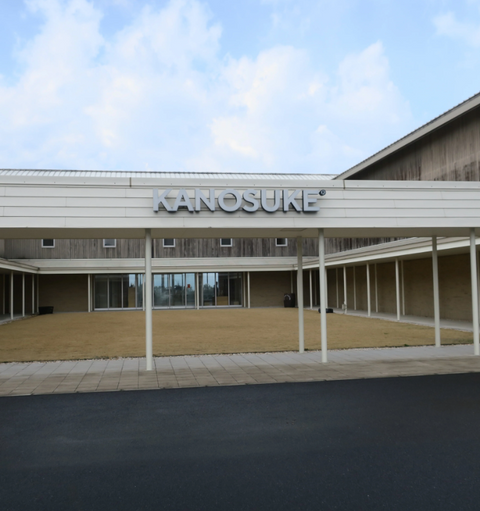 This month’s sakes tried on the rocks and with soda
This month’s sakes tried on the rocks and with soda
I write this in mid-June on a typical Bay Area morning, a thick layer of fog blanketing the block with trees swaying violently in the wind. I sit by the windowsill yearning for warmer days to come, wondering, “Is this month’s theme, Sake on the Rocks, going to miss the mark?” But we are used to cool summers by now, and I hope that you are willing to try an iced drink while wearing a beanie. On the flip side, July 4 is just around the corner, and it’s usually blazing during our annual cookout in our parking lot (hope you made it!).
One of the most common questions we get about sake is “should I drink this cold or warm?” There are several variables that affect how we answer this question. But in general, if the sake is light and fruity with delicate aromatics (like a daiginjo or ginjo) we recommend them cold. While a sake with more savory notes of umami or nuts (common in junmais, yamahais, or kimotos) would be delicious warmed up. However, personal preference can trump these general serving suggestions, and there are always exceptions to the rules.
Case in point: I’m going to throw you for a loop here and introduce two sakes that you should try on the rocks! Concentrated in different ways, both of these sakes are full of flavor. Try them neat and then drop a cube of ice for comparison which will prove to be an educational experience (and hopefully a refreshing one, if the warm weather ever arrives).
We’ve got a lot of events coming up this summer including Meet the Maker: Fukumitsuya Sake Brewery on July 25. Ayako Nakamura of Fukumitsuya will visit our bar for a tasting of her sakes. And on August 9, we will be throwing a Lucky 13 Matsuri. Umami Mart will be 13 years old this August, firmly out of her tweens and officially a teenager with raging hormones!!! We’ve got a few special guests in store for this annual bash that’s free and all ages. We would love nothing more than for you to rage with us!
Kanpai.
Yoko (Co-Founder, Umami Mart)

Jozen On The Rocks Junmai
Shirataki Sake Brewery (Niigata, Japan)
Seimaibuai: Gohyakumangoku 60% , SMV: -70,
Acidity: 8, Yeast: 1801, 901, ABV: 10-11%
I love getting updates on what Toji Takaki Matsumoto, is up to at Shirataki Shuzo. His creativity translates effectively in Shirataki Shuzo’s most posh bottle Seven, to his summer release sakes like Honey Derived Yeast Junmai, and most recently this On The Rocks Junmai. Made using the method of ichidan-shikomi and white koji, this On The Rocks junmai has a concentrated tart flavor with a weightiness on the palate that begs to be on the rocks. While most sakes use yellow koji, brewers sometimes use white koji if they are hoping to dial up the citric acid. That’s why you’ll get notes of lemon and orange in this sake. Matsumoto adds, “Normally, the preparation of the mash is done in three stages (sandan-shikomi), but this is done in one (ichidan-shikomi). Also, we prepare the mash in such a way that the rice is dissolved as much as possible, the sweetness of the rice is maximized.” Because the acidity and sweetness take center stage, and not umami, the best pairings will play on sweet and tart tastes. Try pairing this sake on the rocks with meats or tofu slathered in tangy barbeque sauce, summer sweet corn, and even vanilla ice cream!

Jozen On The Rocks on my backyard picnic table

Tamagawa “White Label” Muroka Nama Genshu Yamahai Junmai
Kinoshita Brewery (Kyoto, Japan)
Seimaibuai: Kitanishiki 66%, SMV: +7, Acidity: 2.7, Yeast: Ambient House Yeast, ABV: 20-22%
My eyeballs popped when I saw the ABV on this sake. Philip Harper, the toji at Kinoshita says, “Most yeast starts dying off when the alcohol gets above 18%, but ours ferment merrily on. The 20% range is pretty standard for us with junmai sakes, and the White label product has gone over 22% seven times in the past, taking it out of the legal definition of sake, which is up to 21.9%. This puts it in a different tax category, and we have to label it as Zasshu (miscellaneous alcohol). This year we got to 22.3%.” Harper ages his sakes at home, saying that he has kept his bottles after opening at room temperature for over a decade and tastes how they grow over the years. Kayoko and I shared this bottle over dinner at Popoca in Oakland. We tried it neat, on the rocks, and with soda. Neat, we got notes of prunes, milk punch, and vermouth. On the rocks, this sake tasted crisper and savory with a hint of lemon rind. My favorite serving style was on the rocks with soda (3:5 parts) – it tasted like cream soda! This sake was spot on with Popoca’s smokey halibut enchiladas, and their yuca con pepescas. Try this sake with bigger flavors like burgers, curry, and guacamole.

Tamagawa White with Yuca at Popoca
Sake Gumi is our monthly sake subscription service with nearly 200 members throughout the country. Join today!




Comments (0)
There are no comments for this article. Be the first one to leave a message!